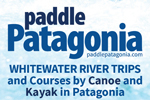 |
 |
Technique Links:
The original version of this article was written by Emmanuel Brugvin, World Champion in 1999. What you are reading is a translation by Jamie McEwan, and is used by permission. THANK YOU Jamie for kicking off a new section of CBoats.net! The C-1 Slalom Forward StrokeThis technical essay is the product of observations and analyses of the elite international C-1 paddlers of the early 2000's. It offers a distillation of the styles actually being used, and so does not pretend to be the unique truth, but rather a model of proven and widely recognized techniques.IntroductionIf there's one slalom discipline that demands the most precise and practiced stroke for maneuvering through the currents and crosscurrents of whitewater, it's C-1 slalom. In contrast with all other classes, in C-1 the propulsion is asymmetrical. Not only should the stroke be powerful, it should also be carefully calculated to make the boat go straight. "Force is useless without direction." This aphorism sums up the first priority of the C-1 paddler. Too many ignore this "detail," in effect putting the cart before the horse. How can you hope to paddle quickly and precisely, performing complex and technical maneuvers, if you can't even go straight? Improve your forward stroke and you'll see a vast improvement in all aspects of your paddling. Every maneuver will become easier, giving you an extra dividend of speed from any given level of fitness (especially at the end of the course).But before beginning to perfect your stroke, it's essential to be well fitted into your boat. It is the outfitting that connects paddler and boat, ennabling you to be one with your craft. Here's an exhaustive list of the different phases of, and technical specifications for, the C-1 slalom stroke. Their length and detail may be intimidating, but you should find that the photographs, clearly labeled with positive examples (in green) and negative examples (in red), will help clarify the text. Step One: Planting the Paddle (The Attack!)
 
Step Two: Propulsion (Power!)
 
Once the Chest has Reached Vertical 
  Subtleties That Make All The DifferenceForward Position(weight transfer): During the paddle plant (The attack phase) the weighting of the boat is only slightly toward the bow because there is no weight on the knees. The transfer of weight at the moment of the extension of the chest is from the buttocks to the paddle, passing as little as possible into the knees (not at all is best!).
The Movement of the TorsoDuring the Power Phase, two movements take place in the torso:
Backward PositionEnd of the Power Phase (the paddle is about to be removed from the water).Contrary to popular belief, the act of tipping the pelvis backward does not cause the stern of the boat to sink. In fact, since the chest finishes in a vertical position, there is no reason for the weight to shift to any significant degree toward the stern. Vaulting Past the PlantThis is purely a mental image, but it is all-important! The image is of taking hold, with the paddle, of a fixed point in the water, and pushing the hips to that point, thereby driving the boat forward. You should imagine moving the hips past the point seized by the blade.
Details for ExpertsIn certain cases, when extra speed is necessary, for sudden accelerations or for starting up from a dead stop, it is best to somewhat change the forward stroke. Two solutions are possible:
ConclusionIt can be seen, from the many aspects and subtleties just covered, that the C-1 stroke is a complex and subtle motion that may take years to perfect. But it's worth the effort! Keeping in mind all of this complexity, and adding to it the effect of the unique build and physiology of each paddler, it is easy to see why there is an incalculable number of possible styles, each with its own richness and idiosyncrasy.
|
||
|
CBoats.net is managed by Adam Pearsall and Kenneth Sarzynski
with graphic artwork by Sara Pearsall
© 2024 by CBoats.net - all rights reserved. Materials found on this website can only be used for personal use. |
